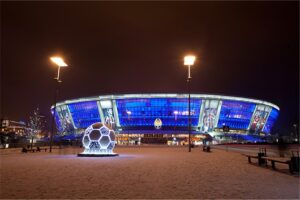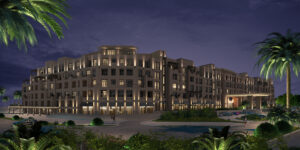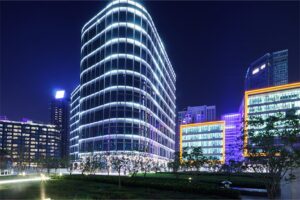In the process of serving our customers, some will send us photos or videos of street lighting products (in this article, “street light” refers to a complete set including poles) and ask us to collaborate with them to create or design similar or identical lighting solutions.
These photos or videos come from various sources: some from the internet, some recommended by others, and some personally taken by the customer during their travels domestically and internationally.
These street light products can be found in every corner of the world, featuring a wide variety of styles, production processes, and technical requirements.
When we encounter such requests, we prioritize customer service and the fulfillment of our customers’ diverse needs. We organize and summarize some common design concepts to efficiently design and produce architectural street lighting products that meet our customers’ requirements. These concepts are briefly described as follows:

Street Light Style
Generally, the photos or video materials sent by customers often do not include specific street lamp design information but are rather casually captured. In such cases, customers sometimes overlook the importance of matching the product style with the architectural style of the cityscape where the project is to be installed.
For example, a customer may travel to Dubai, find a street light appealing, take a picture, and then ask us to refine the design and production based on that image.
At times, the customer might assess whether the style is suitable, but often, they are merely attracted to the street lamp’s style without considering compatibility issues. In these situations, it is our responsibility to guide the customer in addressing the style and its appropriateness first.
For instance, installing an Arabian-style street light in a European-style neighborhood may not be appropriate. This mismatch needs to be communicated to the customer in advance.
Otherwise, after investing time and energy in the design, if the customer realizes that the style does not match and requires a redesign, it will not only waste time and increase design costs but also result in a negative customer experience.

The production process, materials, and size are crucial considerations.
At the beginning of the design phase, it is necessary to make a preliminary judgment about the production process of street lamps based on the materials provided by the customer. Likewise, a preliminary judgment must also be made regarding the materials for the light pole.
Will the light pole be made of steel, aluminum, copper, or stainless steel? Which standard of stainless steel will be used? These considerations are very important for subsequent costing.
Sometimes, the graphic material does not provide information to illustrate the specific height of the street lamp. In such cases, if it is not possible to determine the height through discussion, designers will need to make an initial judgment based on the proportions shown in the graphic material.
Of course, if the customer can visit the site to confirm and provide feedback on the size, that would be ideal.

Safety is paramount.
Architectural street lights are generally considered part of public lighting and fall within the domain of public roads and areas frequently traversed by people and vehicles. Therefore, safety is the primary factor to consider. The height of street light poles commonly ranges from 3 meters to 10 meters.
It is essential to assess the wind speed, thunderstorm activity, and conditions related to rain and snow in the installation area.
When designing the system, it is crucial to ensure that the structural strength (including the materials, strength of connecting parts, wall thickness, etc.), lightning protection measures, electric shock prevention mechanisms, and wiring grounding and insulation measures are capable of withstanding the local rain and snow climate.

The street light head and light source are crucial considerations.
Currently, LED light sources are highly recognized and widely adopted, with the majority of street lamps utilizing LED technology.
The basic functional requirements for street lighting include not only illumination but also the control of glare, appropriate color temperature that is comfortable and harmonizes with the surrounding environment, uniform light distribution without glare, and average illumination levels that meet all national or project-specific design standards.
These requirements necessitate careful consideration of various factors, including the pole’s design, the power and efficiency of the light source, and the performance parameters of lenses or lampshades for secondary light distribution.
Before proceeding to mass production, it is advisable to produce a prototype of the lighting system for testing. A 1:1 IES test (Illuminating Engineering Society test) should be conducted—note that higher power and taller poles often require a larger darkroom for this testing.
The test report should then be analyzed to determine if the light distribution curve meets the specific road or area lighting design requirements.
Additionally, some street lights incorporate auxiliary light sources in addition to the main lamp for non-primary lighting purposes. In such cases, it’s necessary to analyze specific issues and find suitable solutions to achieve the desired effect for the customer.

Driver Considerations
Street light drivers typically require surge protection design to guard against voltage spikes, with a standard anti-surge capacity of 6KV, though some systems are designed to withstand up to 10KV.
This is particularly important in countries and regions experiencing grid instability and voltage fluctuations, where special attention must be given. Additionally, it’s essential to discuss with customers the need for a separate lightning protector.
Communication with the customer should also cover whether there is a requirement for dimming capabilities, light sensor control, and time control.
Moreover, it is necessary to assess if the installation area experiences extreme low or high temperatures, as the driver’s ability to operate in such conditions must be considered. Choosing a driver that can start in extreme weather conditions is crucial.
Furthermore, drivers should have a reserved capacity margin—ideally about 20%—to ensure the longevity and reliability of the driver’s performance.

Consideration of the Street Light Installation Site Environment
When designing a lighting solution, it is essential to thoroughly understand the specific conditions of the architectural project site. Key considerations include:
- Salt Exposure: Is the installation site in a saline environment or close to the sea? If so, the issue of salt spray must be addressed. This concern applies not only to the above-ground components but also to those installed in saline soil, where street light bases can be vulnerable to corrosion from soil salt. For installations in such environments, it is necessary to use anti-salt spray protection for the buried bases and screw bolts that extend above the ground.
- Ultra-Low Temperatures: If the site experiences ultra-low temperatures for extended periods, it is crucial to discuss with the customer whether the lighting should be operational in these conditions. If so, the power supply system must be capable of starting and operating reliably at low temperatures.
- Wind Resistance: In areas prone to hurricanes or high winds, it is important to ensure that the lighting fixtures and their mounting brackets are robust enough to withstand such forces.
Understanding and addressing these environmental factors are vital for ensuring the durability and reliability of street lighting installations.

Design Drawings and Quotations
Taking into account the considerations outlined previously, we can proceed to refine the design of the architectural street lamp by preparing detailed design drawings. Generally, these drawings will illustrate and label the relevant highway technologies as well as the practices for the main and auxiliary light sources. These preliminary designs are then submitted to the customer for review.
Upon receiving approval from the customer, we can finalize the drawings for the purpose of costing and providing a quotation. This process allows us to deliver both the design and quotation to the customer swiftly and accurately, enhancing the overall customer experience. Any interesting, please feel free to contact us solutionproled.com






